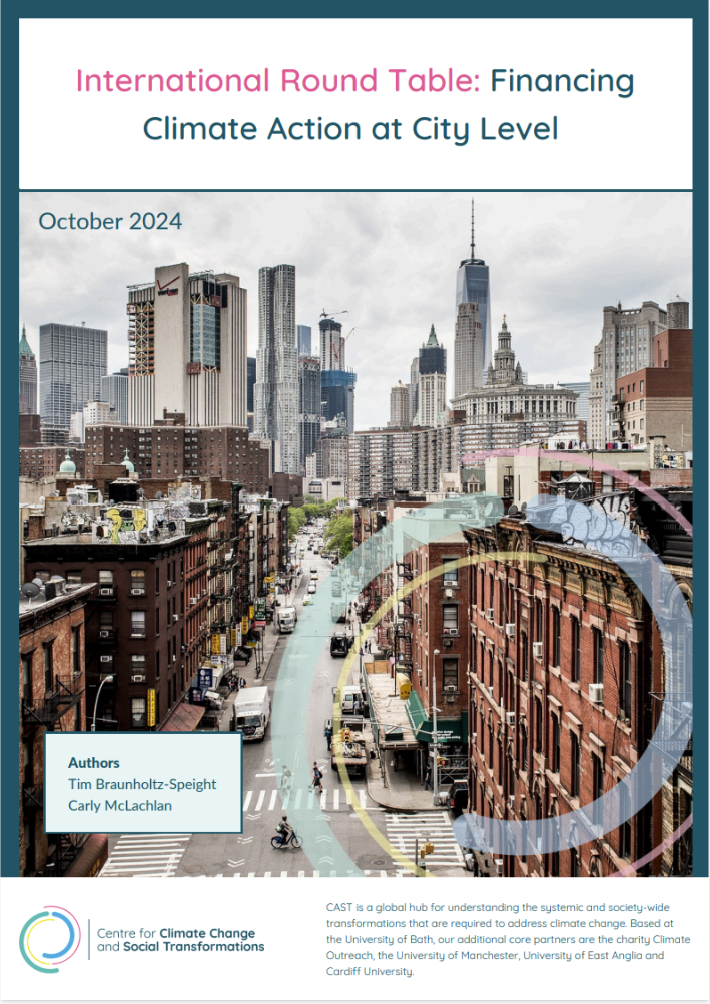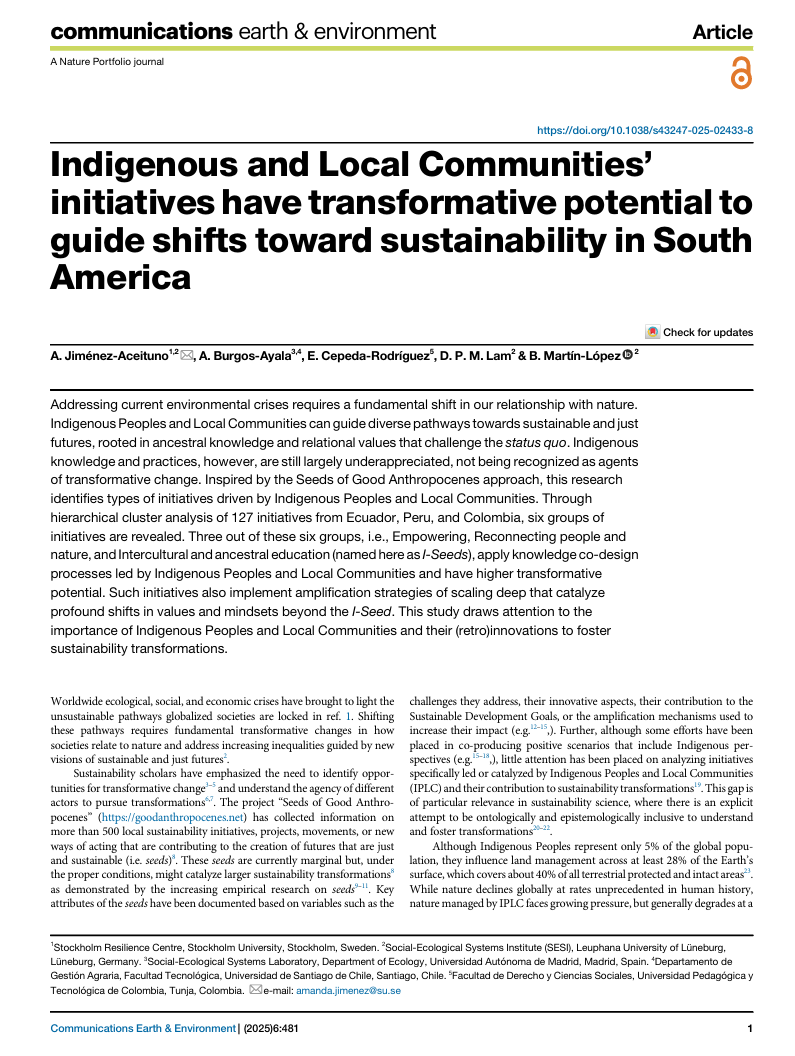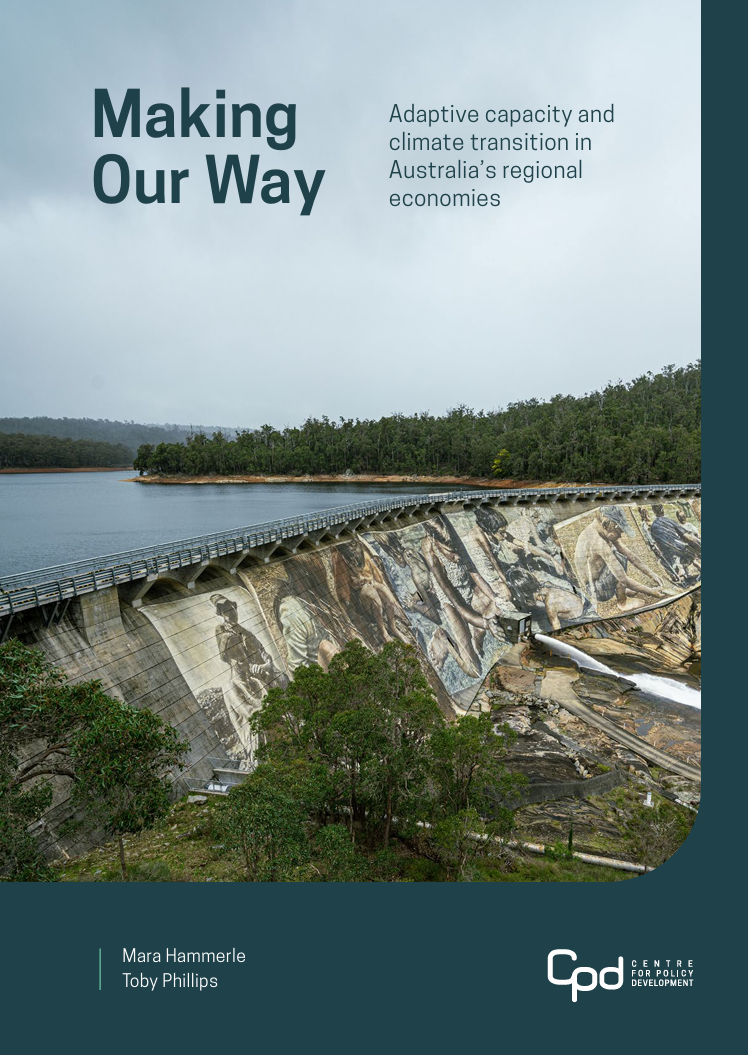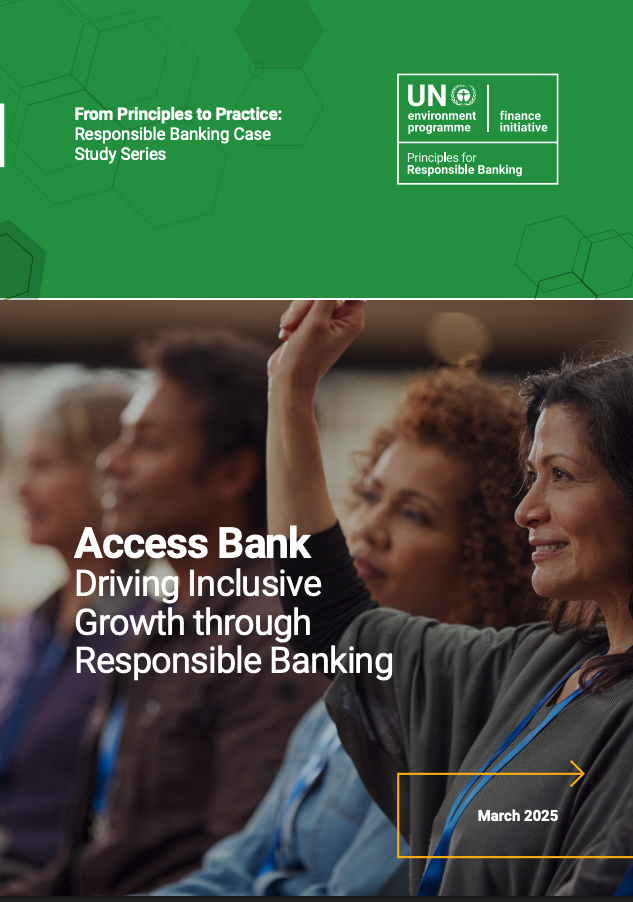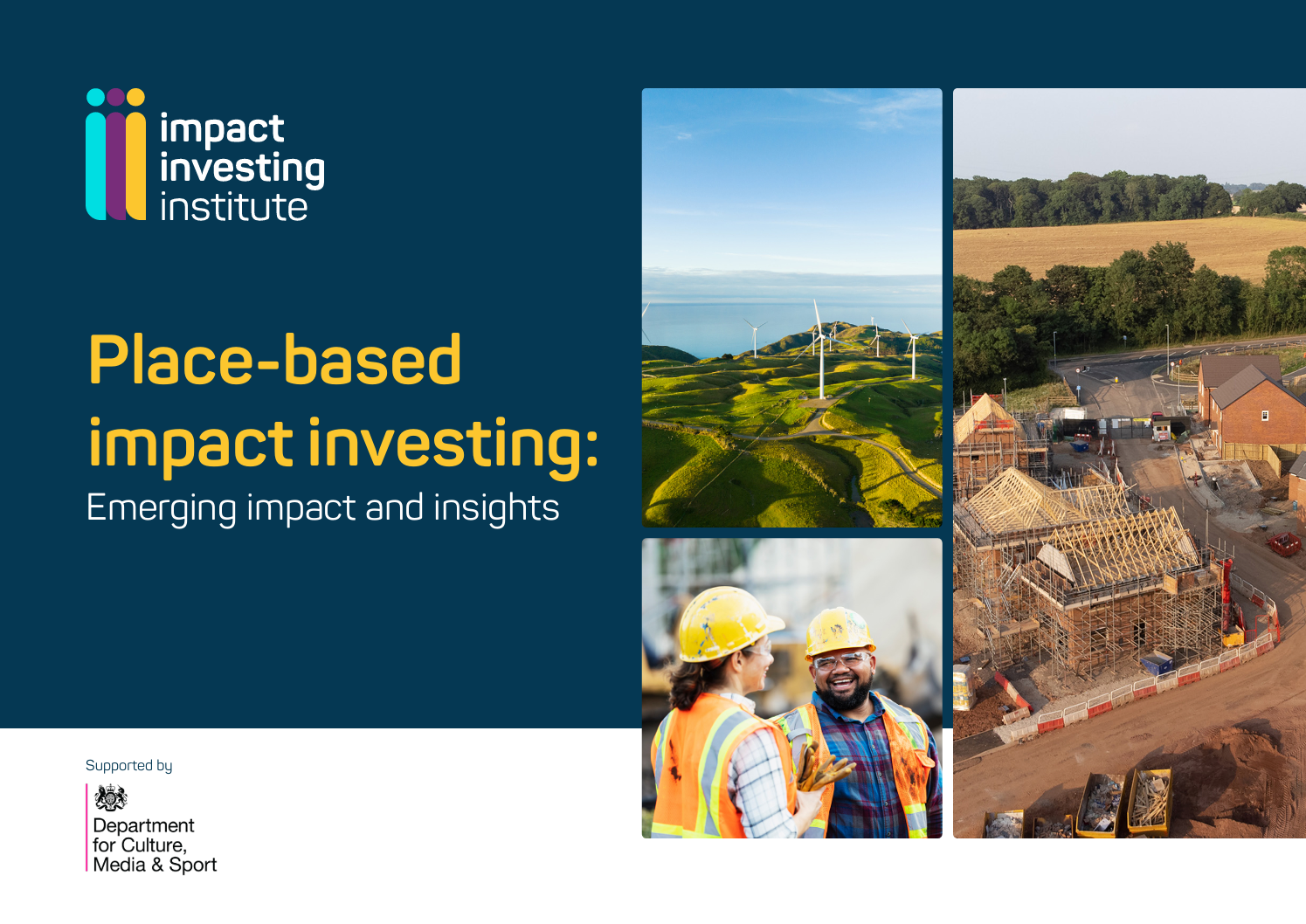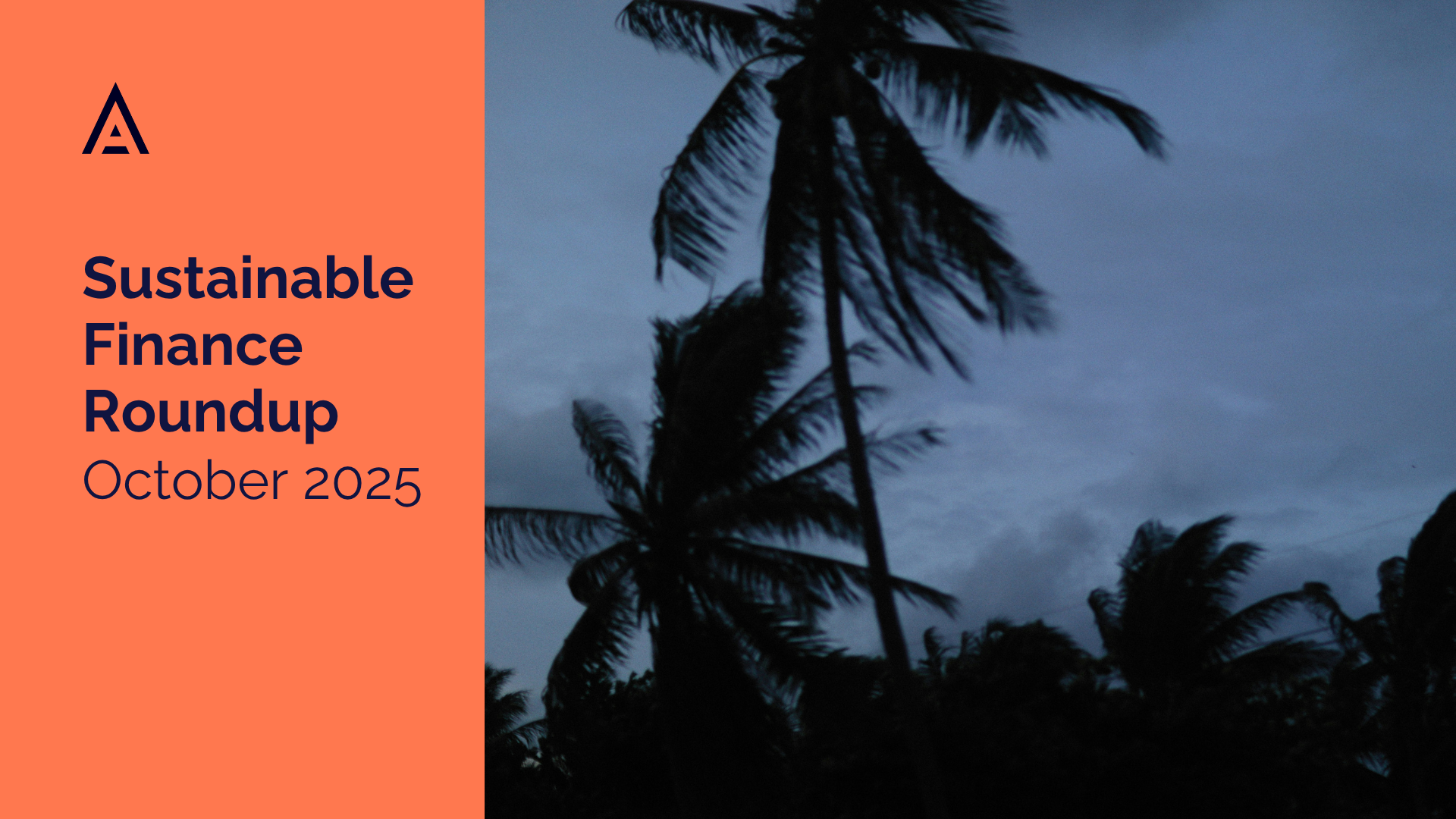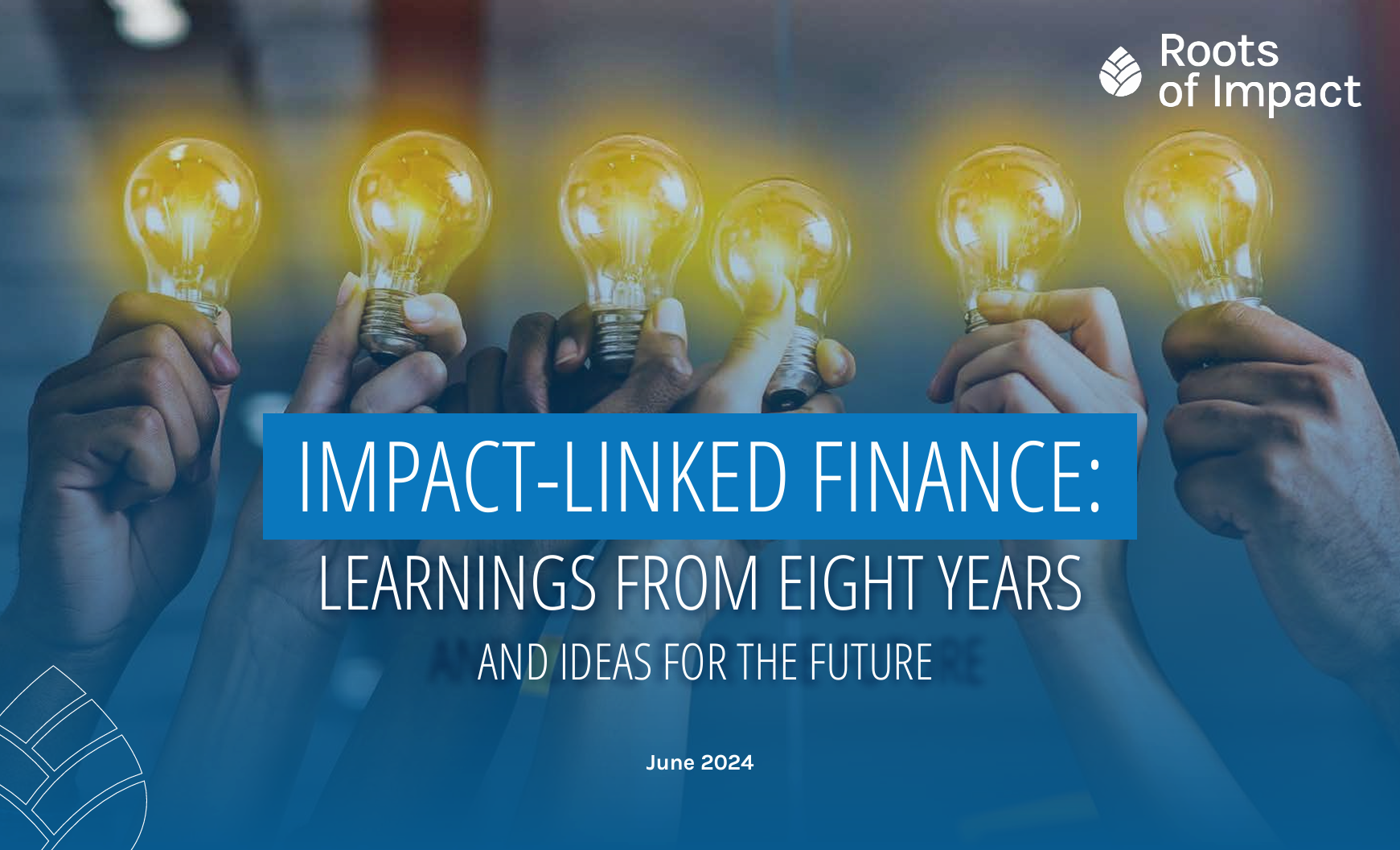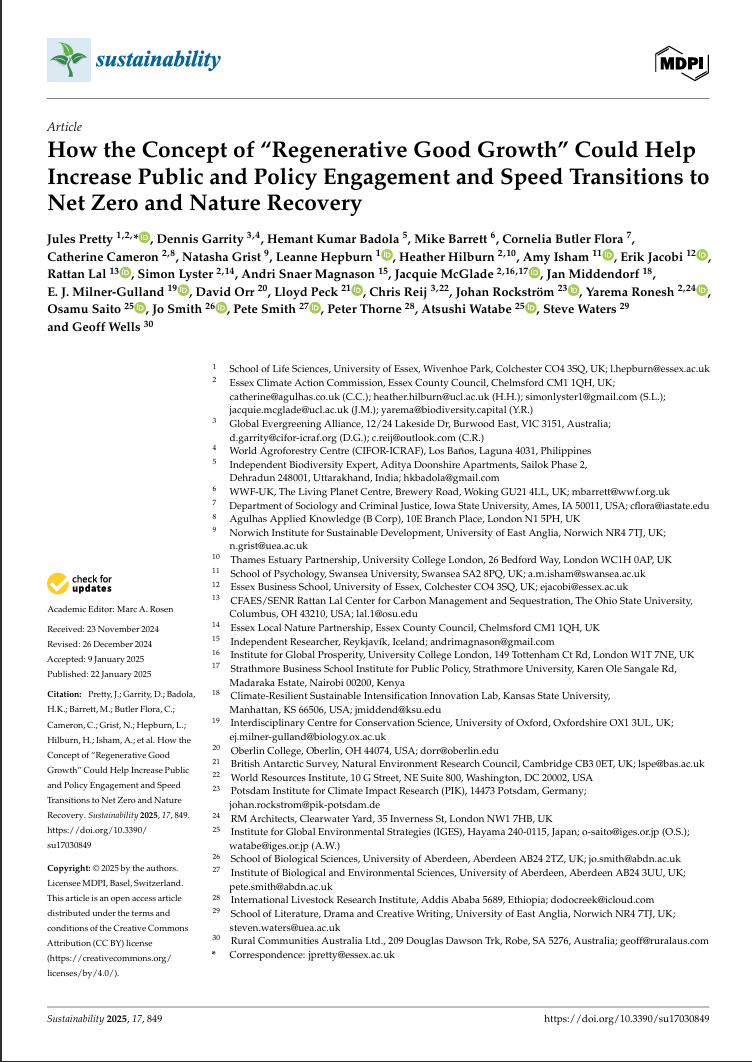Library | ESG issues
Community Development
Community development is a process where individuals and groups collaborate to create a more inclusive society by addressing shared social and economic challenges. It empowers communities to take collective action, ensuring equitable access to resources and opportunities. Examples include investments in affordable housing, infrastructure such as roads, libraries, and parks, and initiatives that support local businesses and workforce development. Strong community development enhances economic resilience, social cohesion, and long-term value creation, influencing corporate and investment strategies.
Refine
124 results
REFINE
SHOW: 16


International round table: Financing climate action at city level
This report synthesises discussions from an international round table on financing city-level climate action, highlighting how local governments overcome fiscal constraints through tailored funding scales, partnerships, innovative revenue mechanisms, and long-term approaches to deliver major decarbonisation programmes across Europe and North America.
Indigenous and local communities’ initiatives have transformative potential to guide shifts toward sustainability in South America
The study examines 127 Indigenous and local community initiatives in Ecuador, Peru and Colombia, identifying three clusters with strong transformative potential. These initiatives use co-designed knowledge and relational values to advance cultural and ecological stewardship, demonstrating significant capacity to influence sustainable, just development pathways.
Making our way: Adaptive capacity and climate transition in Australia’s regional economies
Australia’s fossil-fuel-exposed regions are assessed across seven dimensions of adaptive capacity, showing common weaknesses in economic diversity, social capital and service access. The report outlines region-specific strengths and proposes tailored, place-based transition planning to support diversification and community resilience through the net zero shift.
Access bank: Driving inclusive growth through responsible banking
This case study explores how Access Bank integrates the UN Principles for Responsible Banking into its operations, advancing green finance, financial inclusion, and gender equality. It highlights the bank’s green bond issuances, ESG frameworks, and stakeholder engagement, offering investors insight into sustainable finance practices within emerging markets.
What We Know About Deep-Sea Mining — and What We Don’t
This article explores the growing interest in deep-sea mining as a source of critical minerals for clean technologies, detailing how it works, its potential economic benefits, and the significant ecological and governance risks it poses. It also examines ongoing international regulatory disputes and alternative solutions such as recycling and circular mineral economies.
Place-based impact investing: Emerging impact and insights
The report examines the expansion of place-based impact investing (PBII) in the UK since 2021. It outlines how institutional and local investors, supported by public–private partnerships, are aligning financial returns with social and environmental outcomes. The study highlights progress, barriers, and pathways to scaling PBII through collaboration and blended finance.
Sustainable Finance Roundup October 2025: Carbon Markets, Targets, and the Cost of Resilience
This month’s sustainability roundup traces a rapidly evolving landscape in climate finance and accountability, spotlighting the weaknesses exposed by Hurricane Melissa’s disaster-risk finance system alongside new policy frameworks now reshaping sustainable investment. It highlights how vulnerable nations continue to bear the costs of climate impacts, how regulatory reforms such as Australia’s 2035 emissions target and global disclosure regimes are embedding accountability, and how renewed scrutiny of carbon markets is driving the search for credible, incentive-based pathways to real decarbonisation.
Impact-linked finance: Learning from eight years and ideas for the future
This report by Roots of Impact (2024) reviews eight years of experience implementing Impact-Linked Finance (ILF), a structuring approach that rewards measurable social or environmental outcomes by linking financial terms to impact performance. It outlines ILF’s evolution, design principles, effectiveness benchmarks, and opportunities to scale through collaboration and new impact-linked instruments.
Oxford university press
Oxford University Press (OUP) is a global academic and educational publisher. It operates as a department of the University of Oxford, producing textbooks, scholarly works, English language resources and reference works. OUP emphasises digital innovation, sustainability commitments, and broad international reach in research and education.
How the concept of “Regenerative Good Growth” could help increase public and policy engagement and speed transitions to Net Zero and nature recovery
The report introduces the concept of Regenerative Good Growth (RGG) as an alternative to extractive GDP-focused models. It argues that economic progress should regenerate five renewable capitals, natural, social, human, cultural, and sustainable physical, while ensuring fairness, engagement, and reduced environmental harm. RGG promotes inclusive, low-carbon, and nature-positive transitions through diverse public participation.
MDPI
MDPI (Multidisciplinary Digital Publishing Institute) is a Swiss-based publisher of open access, peer-reviewed journals, established in 1996. MDPI publishes over 470 academic journals across science, technology and medicine, with authors covering article processing charges to enable unrestricted global access.
Rockefeller Capital Management
Rockefeller Capital Management (RockCo) delivers wealth management, asset management and investment banking services grounded in the Rockefeller legacy. Serving individuals, families and institutions, RockCo emphasises bespoke financial solutions, generational wealth planning and strategic advisory — combining innovation with long-standing trust.
Grantham Foundation
Grantham Foundation for the Protection of the Environment supports climate innovation, environmental research and impact investing. Through its grant and investment programmes (such as its venture arm, Neglected Climate Opportunities), it backs early-stage technologies in carbon capture, clean energy, soil health and ecosystem conservation globally.
NYU Stern Center for Sustainable Business
NYU Stern’s Center for Sustainable Business (CSB) conducts applied research, education and engagement to embed environmental, social and governance (ESG) practices into core business strategy. It helps leaders quantify sustainability’s financial value, offers executive certificates, and develops tools to assess materiality and carbon impact.
Morgan Stanley Wealth Management
Morgan Stanley Wealth Management provides financial advice, investment strategies, and portfolio management for individuals, families, and institutions. Its services include retirement planning, sustainable investing, and access to global market insights. Morgan Stanley combines advanced digital tools with expert guidance to help clients achieve long-term financial goals and preserve wealth across generations.
United Nations Conference on Trade and Development (UNCTAD)
UN Trade and Development (UNCTAD) is a UN intergovernmental body that supports developing countries in trade, investment, finance and technology. It delivers data-driven policy analysis, technical cooperation and global consensus building to help countries integrate into the world economy and advance sustainable development.
